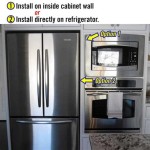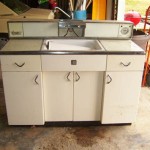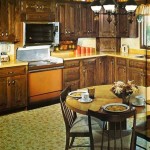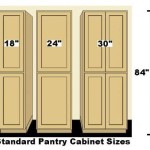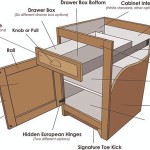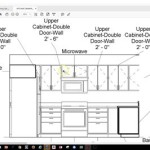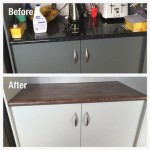DIY Kitchen Cabinets Painting Kits: A Comprehensive Guide
Painting kitchen cabinets is a cost-effective way to revitalize the heart of a home. Replacing cabinets can be a significant financial burden, while painting offers a transformative change at a fraction of the cost. DIY kitchen cabinet painting kits provide a convenient solution for homeowners seeking to achieve professional-looking results without hiring a professional painter. These kits typically include all the necessary materials and instructions for a successful cabinet painting project. However, understanding the components, preparation process, and application techniques is crucial for maximizing the kit's potential and ensuring a durable, aesthetically pleasing finish.
The decision to use a DIY kit hinges on factors such as the homeowner's comfort level with painting projects, the time commitment involved, and the desired quality of the final product. While kits offer convenience, a thorough understanding of the process and adherence to best practices are essential for achieving optimal results. This article aims to provide a comprehensive guide to DIY kitchen cabinet painting kits, outlining their contents, preparation steps, painting techniques, and considerations for choosing the right kit.
Understanding the Components of a DIY Kitchen Cabinet Painting Kit
A typical DIY kitchen cabinet painting kit contains several essential components designed to facilitate the painting process. The specific items included may vary depending on the brand and price point of the kit, but most will include the following:
Cleaning Solution: This is specifically formulated to degrease and remove dirt, grime, and cooking residue from cabinet surfaces. Proper cleaning is paramount for paint adhesion and a smooth finish. Standard household cleaners may leave residue that interferes with the paint's ability to bond effectively. The cleaning solution in the kit is usually designed to leave a clean, paint-ready surface.
Deglosser/Etcher: Many kits include a deglosser or etcher to dull the existing finish on the cabinets. This is especially important for glossy or varnished surfaces, as it creates a slightly roughened texture that allows the primer and paint to adhere more effectively. Instead of sanding, a deglosser chemically removes the sheen, saving time and effort.
Primer: Primer is an essential component that creates a uniform surface for the paint to adhere to. It also helps to seal the existing finish, prevent bleed-through of old colors or stains, and improve the overall durability of the paint job. Look for primers specifically designed for cabinets, often labeled as stain-blocking or bonding primers.
Paint: The paint included in the kit is typically a high-quality acrylic or enamel paint formulated for durability and ease of application. It is often available in a variety of colors and finishes, such as satin, semi-gloss, or gloss. Cabinet-specific paints are designed to withstand the wear and tear of daily use in a kitchen environment, including moisture, spills, and frequent cleaning.
Applicators: Most kits include paintbrushes, rollers, or both. The quality of the applicators can directly impact the final finish. High-quality synthetic brushes are recommended for a smooth, even application. Foam rollers can also be used to minimize brushstrokes. Some kits may even include a small paint sprayer, although these are less common in standard DIY kits.
Drop Cloths and Painter's Tape: Protection is paramount. Drop cloths protect floors and countertops from paint splatters, while painter's tape is used to mask off areas that should not be painted, such as walls, backsplashes, and hardware.
Instruction Manual or Guide: A clear and concise instruction manual is a crucial component of any DIY kit. It should provide step-by-step instructions, tips, and troubleshooting advice for each stage of the painting process.
Preparing Kitchen Cabinets for Painting
The preparation phase is arguably the most important aspect of a successful cabinet painting project. Thorough preparation ensures proper paint adhesion, a smooth finish, and long-lasting results. Skipping or rushing through these steps can lead to peeling, chipping, and an uneven appearance. The following steps outline the essential preparation tasks:
Removal of Doors and Hardware: Begin by removing all cabinet doors and drawers. Label each door and drawer with a corresponding number or letter to ensure proper reinstallation. Remove all hardware, including knobs, pulls, hinges, and handles. Store the hardware in a safe place to prevent loss or damage. Consider replacing old hardware with new pieces to further enhance the updated look of the cabinets.
Cleaning and Degreasing: Use the provided cleaning solution to thoroughly scrub all cabinet surfaces, both inside and out. Pay particular attention to areas around the stove and sink, where grease and grime tend to accumulate. Rinse the surfaces with clean water and allow them to dry completely.
Sanding (or Deglossing): If the kit includes sandpaper, lightly sand all surfaces to create a slightly roughened texture for better paint adhesion. Alternatively, use the provided deglosser or etcher according to the manufacturer's instructions. This step is crucial for removing the sheen from glossy surfaces. If sanding, use fine-grit sandpaper (220 grit or higher) and avoid excessive pressure, which can damage the wood.
Repairing Imperfections: Inspect the cabinets for any dents, scratches, or chips. Fill these imperfections with wood filler and allow it to dry completely. Sand the filled areas smooth to blend seamlessly with the surrounding surfaces. This step is essential for achieving a professional-looking finish.
Taping and Protection: Use painter's tape to mask off any areas that should not be painted, such as walls, backsplashes, and the interiors of cabinets. Cover countertops, floors, and appliances with drop cloths to protect them from paint splatters. Proper protection minimizes cleanup and prevents unwanted paint damage.
Applying Primer and Paint for a Professional Finish
Once the cabinets are properly prepared, the painting process can begin. Applying the primer and paint correctly is essential for achieving a smooth, even, and durable finish. The following steps outline the recommended techniques:
Applying Primer: Apply a thin, even coat of primer to all cabinet surfaces. Use a high-quality brush or roller, depending on the kit's instructions and the desired finish. Avoid applying the primer too thickly, as this can lead to drips and runs. Allow the primer to dry completely according to the manufacturer's recommendations. Lightly sand the primed surface with fine-grit sandpaper to remove any imperfections or brushstrokes.
Applying Paint: Apply the first coat of paint in a thin, even layer. Use the same technique as with the primer, ensuring that the paint is evenly distributed. Allow the first coat to dry completely before applying a second coat. Applying multiple thin coats is preferable to applying one thick coat, as it reduces the risk of drips and runs and creates a more durable finish.
Sanding Between Coats: Lightly sand the painted surface with fine-grit sandpaper between coats to remove any imperfections or brushstrokes. This step is crucial for achieving a smooth, professional-looking finish. Remove any sanding dust with a tack cloth before applying the next coat of paint.
Applying Additional Coats: Apply additional coats of paint as needed to achieve the desired color and coverage. Typically, two coats of paint are sufficient, but darker colors may require additional coats. Allow each coat to dry completely before applying the next.
Removing Tape and Reassembling: Once the final coat of paint is completely dry, carefully remove the painter's tape. Reinstall the hardware and reattach the doors and drawers to the cabinets. Ensure that the doors and drawers are properly aligned and that the hardware is securely fastened.
Curing Time: Allow the paint to fully cure for the recommended time period before using the cabinets. Curing time allows the paint to harden and adhere properly, ensuring a durable and long-lasting finish. Avoid excessive use or cleaning of the cabinets during the curing period.
Choosing the right DIY kitchen cabinet painting kit requires careful consideration of several factors. Assess the size of the kitchen, the condition of the cabinets, and the desired finish. Read reviews and compare different kits to determine which one best suits the specific needs and skill level. Investing in a high-quality kit with all the necessary components and clear instructions significantly increases the chances of a successful and satisfying cabinet painting project.

How To Paint Kitchen Cabinets Like The Pros

The Right Way To Paint Your Kitchen Cabinets And Save Factory Finish Guaranteed Emily Henderson

How To Paint Kitchen Cabinets A Step By Guide Confessions Of Serial Do It Yourselfer

Diy Kitchen Cabinets 25 And Easy Ideas For An Update Joyful Derivatives

How To Paint Kitchen Cabinets Like The Pros

The Complete List Of Supplies Needed To Paint Cabinets

Avoid These Mistakes How To Paint Cabinets That Are Already Painted Grace In My Space

How To Paint Kitchen Cabinets Best Color Ideas Cost

How To Paint Kitchen Cabinets True Value

How To Paint Laminate Kitchen Cabinets Perfect Finish Tips

